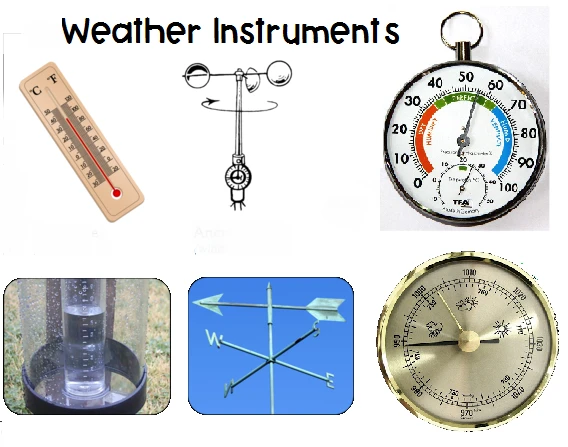
# Weather Instruments: Essential Tools for Accurate Forecasting
## Introduction to Weather Instruments
Weather instruments are specialized tools designed to measure various atmospheric conditions. These devices play a crucial role in meteorology, helping scientists and weather enthusiasts collect accurate data for forecasting and climate studies. From simple thermometers to sophisticated radar systems, weather instruments provide the foundation for understanding our ever-changing atmosphere.
## The Most Common Weather Instruments
### Thermometers
Thermometers measure air temperature, one of the most fundamental weather parameters. Modern digital thermometers provide quick and precise readings, while traditional mercury or alcohol thermometers remain reliable options for many applications.
### Barometers
Barometers track atmospheric pressure, which is essential for predicting weather changes. A sudden drop in pressure often indicates approaching storms, while rising pressure typically signals fair weather. Mercury barometers and aneroid barometers are the two main types used today.
### Hygrometers
These instruments measure humidity levels in the air. Understanding humidity helps predict precipitation, fog formation, and human comfort levels. Psychrometers (wet-and-dry bulb thermometers) and electronic hygrometers are common variants.
### Anemometers
Anemometers measure wind speed, while wind vanes determine wind direction. These instruments are vital for weather forecasting, aviation, and marine applications. Cup anemometers and propeller anemometers are among the most widely used designs.
### Rain Gauges
Simple yet effective, rain gauges measure precipitation amounts over specific periods. Standard rain gauges collect rainfall in a graduated cylinder, while more advanced tipping bucket gauges provide automated measurements.
## Advanced Weather Instruments
### Weather Radars
Modern weather radars use radio waves to detect precipitation, its intensity, and movement. Doppler radar systems can also measure wind speed and direction within storms, providing crucial data for severe weather warnings.
### Weather Satellites
Orbiting Earth, weather satellites provide comprehensive views of global weather patterns. They monitor cloud cover, storm development, sea surface temperatures, and other critical atmospheric phenomena.
### Weather Balloons
Equipped with instrument packages called radiosondes, weather balloons collect data about temperature, humidity, pressure, and wind at various altitudes. This information is essential for creating accurate weather models.
## The Importance of Proper Instrument Placement
For weather instruments to provide accurate data, proper siting is crucial. Instruments should be:
– Placed in open areas away from buildings and trees
– Positioned at standard heights (e.g., 1.25-2 meters above ground for thermometers)
– Protected from direct sunlight and precipitation when necessary
– Regularly maintained and calibrated
## Weather Instruments in Everyday Life
While professional meteorologists use sophisticated equipment, many weather instruments are accessible to the public. Home weather stations combine multiple sensors to provide local weather data, helping individuals track conditions in their immediate environment. Smartphone apps and online platforms often integrate data from both professional and amateur weather stations, making weather information more accessible than ever.
## The Future of Weather Instruments
Technological advancements continue to improve weather instruments. Miniaturization allows for more compact and portable devices, while wireless connectivity enables real-time data sharing. Artificial intelligence is being integrated into weather systems to improve forecasting accuracy by analyzing vast amounts of instrument data more efficiently.
From ancient rain gauges to space-based observation systems, weather instruments have evolved dramatically. These essential tools not only help us understand current conditions but also improve our ability to predict future weather patterns, ultimately helping society prepare for and respond to atmospheric changes.
Keyword: wether instruments